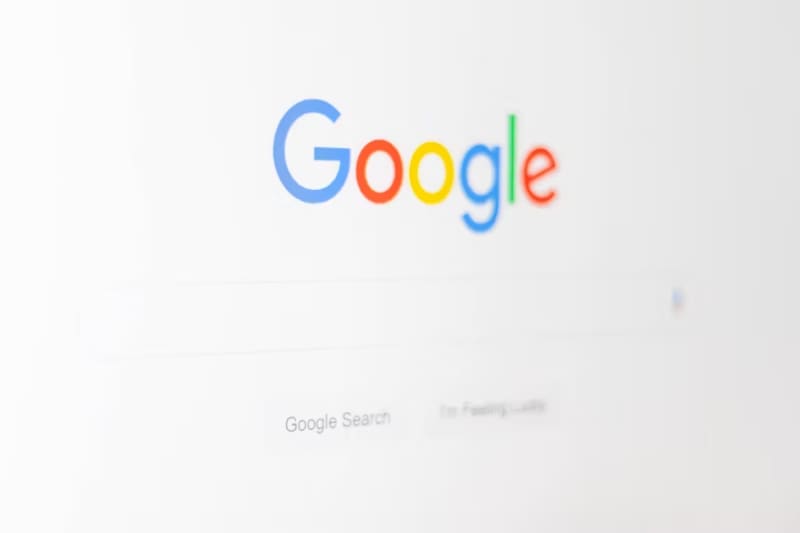Google has quietly rolled out a transformation that’s fundamentally changing how millions of people find information online. It’s called AI Mode, and if you’re a content creator, marketer, or business owner, it’s already affecting your traffic—whether you realize it or not.
Recent studies analyzing 10,000 keywords reveal a startling reality: Google’s AI Mode shows only 9.2% URL overlap when running the same query multiple times, according to SE Ranking’s comprehensive research. Even more concerning, across 800 companies spanning 16 sectors, average monthly traffic growth plummeted from 26.3% to just 3.7% year-over-year—an 86% decline since AI Mode launched.
Critical Statistics You Need to Know:
- 18-64% traffic reduction reported across technology sector websites (Search Engine Land study)
- 64% of strategic keywords no longer appear in traditional search results
- Only 14% overlap between AI Mode citations and top 10 organic rankings
- 91% URL variation across repeat searches for identical queries
This isn’t just another algorithm update—it’s a complete reimagining of how search works. Here’s everything you need to understand and, more importantly, what you can do about it.
What Exactly Is Google AI Mode?
Google AI Mode represents a fundamental shift from search engine to answer engine. Instead of presenting a list of blue links, AI Mode delivers direct, conversational answers synthesized from multiple sources—often eliminating the need for users to click through to websites.
The Three Flavors of Google’s AI Search
1. AI Overviews (The Gateway Drug)
- Appears at the top of traditional search results
- Provides concise summaries with inline citations
- Triggers on queries where AI can add value beyond traditional results
- Still shows traditional organic results below
2. AI Mode (The Full Experience)
- Activated through Chrome’s search interface
- Conversational, chatbot-style interaction
- Often omits traditional blue links entirely
- Handles complex, multi-part queries with follow-up capabilities
3. Search Generative Experience (SGE)
- The experimental predecessor to AI Mode
- Beta testing phase that informed current implementations
- Now largely rolled into AI Overviews and AI Mode
How AI Mode Actually Works
According to Google’s official documentation, AI Mode uses a “query fan-out” technique:
- Query Analysis: Breaks complex questions into multiple subtopics
- Source Identification: Searches across diverse data sources simultaneously
- Synthesis: Advanced models generate coherent responses
- Citation Selection: Identifies supporting web pages (often different from traditional rankings)
- Presentation: Delivers conversational answer with inline links
The key difference? Traditional SEO ranking factors matter less. AI Mode prioritizes content that can be easily synthesized, cited, and understood by AI systems—not just content that accumulates backlinks and keyword density.
The Brutal Reality: Traffic Impact Data
The Numbers Don’t Lie
Search Engine Land’s analysis of 23 technology websites reveals the stark impact:
Aggregate Traffic Impact Scenarios:
- Best Case (Optimistic rank/CTR): 18% traffic decline
- Mixed Scenario 1: 38% decline
- Mixed Scenario 2: 54% decline
- Worst Case (Pessimistic rank/CTR): 64% traffic decline
Even in the most favorable scenario, significant traffic loss occurs. And here’s the kicker: some individual websites saw drops as high as 95%, while others experienced growth up to 219%—the variance is massive.
Why Some Sites Win While Others Lose
The Winners:
- Sites with demonstrable E-E-A-T (Experience, Expertise, Authoritativeness, Trustworthiness)
- Content structured for easy AI synthesis
- Technical implementation optimized for AI crawling
- Deep, unique expertise not easily replicated
The Losers:
- Informational content that’s easily summarized (definitions, basic how-tos)
- Thin content relying on keyword density
- Sites dependent on simple queries
- Content without clear expertise signals
Research from Search Engine Journal highlights another critical finding: AI Mode shows minimal overlap with traditional organic results. Only 14% of URLs cited in AI Mode also appear in the top 10 organic results for the same query—meaning your current rankings may offer little protection.
The Volatility Problem: Why Consistency Matters More Than Ever
One of AI Mode’s most challenging characteristics is its unpredictability. The same query can return vastly different results:
Consistency Metrics from SE Ranking Study:
- 9.2% URL overlap across three identical searches
- 14.7% domain overlap (slightly better at domain level)
- 21.2% of queries returned zero overlapping URLs
- 10.7% overlap between AI Mode and AI Overviews (even Google’s own AI features disagree!)
What This Means for Content Strategy
Traditional SEO relied on achieving and maintaining rankings. Once you ranked #1, you generally stayed there (barring competitor efforts or algorithm updates). AI Mode breaks this model:
- Rankings are fluid and query-dependent
- Same content may appear or disappear unpredictably
- Domain authority helps but doesn’t guarantee inclusion
- Multiple opportunities to appear for the same query over time
This volatility is actually good news for smaller sites: you don’t need to outrank established competitors permanently—you just need to be relevant and well-structured when AI Mode queries your niche.
The Most-Cited Domains: Who’s Winning the AI Mode Game
Despite the volatility, certain patterns emerge. According to SE Ranking’s analysis of 10,000 keywords:
Top 5 Most-Cited Domains:
- Indeed (1.8%) - Job search platform
- Wikipedia (1.6%) - Comprehensive, structured information
- Reddit (1.5%) - User-generated, conversational content
- YouTube (1.4%) - Video content and tutorials
- NerdWallet (1.2%) - Expert financial advice
Google properties account for 5.7% of citations, mostly Google Maps business profiles—suggesting local optimization remains valuable.
What These Winners Have in Common
- Structured, comprehensive information (Wikipedia)
- User-generated, authentic perspectives (Reddit)
- Clear expertise in specific domains (NerdWallet)
- Multi-format content (YouTube)
- Regularly updated, fresh content (Indeed, Reddit)
Proven Optimization Strategies: The Recovery Framework
The good news? It’s possible to adapt and even grow traffic in the AI Mode era. Here are evidence-based strategies from successful recovery case studies.
Strategy #1: Optimize for E-E-A-T Signals
Google’s AI systems heavily prioritize Experience, Expertise, Authoritativeness, and Trustworthiness. This isn’t new, but it’s now critical.
Actionable Steps:
- Author Bios: Include detailed credentials, real photos, and expertise indicators
- About Pages: Clearly establish organizational authority and mission
- Source Citations: Link to authoritative external sources (showing you’re well-researched)
- Original Research: Conduct surveys, experiments, or data analysis
- Expert Quotes: Include perspectives from recognized industry leaders
- Update Logs: Show content is maintained and current
Real-World Example: One cybersecurity website in the Search Engine Land study optimized just 4 pages with enhanced E-E-A-T signals (detailed author expertise, cited security research, technical accuracy verification) and turned a 42% projected traffic loss into 84% projected growth in the best scenario.
Strategy #2: Structure Content for AI Synthesis
AI Mode excels at extracting and synthesizing information. Make it easy for AI to understand and cite your content.
Content Structure Best Practices:
## Use Clear, Descriptive Headings (H2, H3)
- Bullet points for scannable information
- Short paragraphs (2-4 sentences)
- Bold key terms and concepts
- Answer questions directly and concisely
- Include FAQ sections targeting voice search queries
### Implement Schema Markup
- FAQ schema for Q&A content
- HowTo schema for tutorials
- Article schema with proper metadata
- Review schema for product/service evaluations
Data Point: In Search Engine Land’s recovery projects, pages optimized for AI synthesis achieved an 88% success rate entering AI Mode snapshot carousels (compared to 21% natural entry rate).
Strategy #3: Target Conversational, Complex Queries
AI Mode shines on queries that previously required multiple searches. Traditional search optimizes for single keywords; AI Mode handles comprehensive questions.
Query Type Shift:
- ❌ Old: “best CRM software”
✅ New: “What’s the best CRM software for a 50-person B2B SaaS company that integrates with Salesforce and has strong email automation?”
- ❌ Old: “JavaScript async await”
- ✅ New: “How do I handle errors in async/await JavaScript functions while maintaining code readability?”
Content Strategy: Create comprehensive guides that answer related questions in a single resource. Think “ultimate guide” rather than narrow, single-keyword posts.
Strategy #4: Build Topical Authority Clusters
AI Mode favors sites recognized as authorities in specific domains rather than sites that occasionally touch on topics.
Cluster Strategy:
- Pillar Content: Comprehensive, 3,000+ word guides on core topics
- Supporting Content: Detailed articles on subtopics linking to pillar
- Regular Updates: Keep content current with latest information
- Internal Linking: Clear topical relationships between content
Example Structure:
Pillar: "Complete Guide to React Hooks"
├── Supporting: "useState Hook: Advanced Patterns"
├── Supporting: "useEffect Hook: Best Practices"
├── Supporting: "Custom Hooks: When and How to Build Them"
└── Supporting: "React Hooks Performance Optimization"
This signals to AI systems that you’re a definitive resource on the topic, increasing citation likelihood.
Strategy #5: Embrace Multi-Format Content
The most-cited domains include YouTube (video) and Reddit (discussion). AI Mode draws from diverse content types.
Format Diversification:
- Video Content: Tutorials, explanations (YouTube optimization)
- Interactive Tools: Calculators, generators, configurators
- Discussion Forums: Community-generated Q&A (Reddit-style)
- Infographics: Visual data representation
- Podcasts: Audio content with transcripts
Each format provides different entry points for AI Mode citations.
Real Recovery Case Studies: Proof It Works
Search Engine Land documented three successful AI Mode optimization projects. Here’s what worked:
Case Study #1: Enterprise Cloud Platform (35K Monthly Visits)
Before Optimization:
- Expected traffic drop: 79-85%
- 23 strategic keywords losing visibility
- Devastating projected impact
Optimization Actions:
- Optimized 11 existing pages (72% success rate)
- Created 4 new “ideal pages” for AI Mode (75% success rate)
- Enhanced E-E-A-T signals and content structure
Results:
- Expected traffic growth of 97% in best scenario (from -79% to +97%)
- Only 6 strategic keywords still at risk (saved 17)
- Worst case improved from -85% to -31%
Case Study #2: Cloud Native Developer Tool (175K Monthly Visits)
Before Optimization:
- Expected traffic drop: 44-75%
- 7 strategic keywords at risk
Optimization Actions:
- Optimized 9 pages (88% success rate)
- Created 8 new pages (37% success rate)
Results:
- Best case improved to only 5% drop (from 44%)
- Worst case improved from 75% to 57%
- Saved 4 of 7 strategic keywords
Case Study #3: Cybersecurity Solution (15K Monthly Visits)
Before Optimization:
- Expected traffic drop: 22-42%
Optimization Actions:
- Optimized 3 pages (66% success rate)
- Created 1 ideal page (100% success rate)
Results:
- Best case turned into 84% growth (from -22%)
- Worst case improved from -42% to -34%
Key Takeaway: Even optimizing a handful of pages (3-11) dramatically improved outcomes across all scenarios.
What You Should Do Right Now
The AI Mode transformation is happening whether you’re ready or not. Here’s your action plan:
Immediate Actions (This Week)
Audit Your Top Traffic Pages
- Identify your 10-20 highest-traffic pages
- Check if they appear in AI Mode results for target queries
- Assess content structure and E-E-A-T signals
Test AI Mode Visibility
- Use Chrome’s AI Mode (if available in your region)
- Search for your target keywords
- Document which competitors appear in AI responses
Implement Basic Schema Markup
- Add FAQ schema to Q&A content
- Implement Article schema with proper metadata
- Use HowTo schema for tutorials
Short-Term Priorities (This Month)
Enhance E-E-A-T Signals
- Add/improve author bios with credentials
- Include source citations to authoritative sites
- Create or update About/Team pages
Restructure Top Content
- Break long paragraphs into shorter ones
- Add clear H2/H3 headings with keywords
- Include bullet points and scannable elements
- Add FAQ sections answering related queries
Analyze Traffic Changes
- Set up Search Console monitoring
- Track traffic source changes
- Identify queries losing traditional search traffic
Long-Term Strategy (Ongoing)
Build Topical Authority
- Create content clusters around core topics
- Establish internal linking structure
- Regularly update existing content
Diversify Content Formats
- Develop video content (YouTube optimization)
- Create interactive tools or calculators
- Consider community features (Q&A, forums)
Monitor and Adapt
- Track AI Mode citation patterns
- Test optimization techniques in your niche
- Stay informed on AI Mode evolution
The Bigger Picture: Adapt or Become Invisible
Google AI Mode isn’t a temporary experiment—it’s the future of search. The data makes this clear:
- Traffic is shifting from traditional blue links to AI-generated answers
- The 10-position ranking model is becoming less relevant
- Content quality and structure now matter more than backlink counts
- Expertise signals determine AI citation likelihood
But here’s the silver lining: Small sites can compete. The volatility and diversity of AI Mode citations mean you don’t need to outrank Wikipedia or massive competitors permanently. You need to:
- Provide unique expertise AI can’t find elsewhere
- Structure content for easy AI synthesis
- Build demonstrable authority in specific niches
- Create comprehensive, helpful resources
The websites seeing traffic growth in AI Mode aren’t necessarily the ones with the highest domain authority—they’re the ones providing genuine value in formats AI systems can effectively cite.
Final Thoughts: The End of SEO as We Knew It
The transition to AI Mode represents the most significant change to search since Google launched 27 years ago. It’s uncomfortable, disruptive, and—for many businesses—scary.
But it’s also an opportunity. The old SEO playbook of keyword stuffing, link schemes, and thin content never worked well long-term anyway. AI Mode accelerates the inevitable: good content wins.
If you’ve been creating genuinely helpful, expert-level content with proper structure and user focus, you’re already ahead. If you’ve relied on SEO tricks and surface-level content, the next 6-12 months will be painful.
The choice is clear: Adapt now, or watch your traffic disappear as AI Mode expands to more queries, more countries, and more users.
Start with the immediate actions above. Optimize your top 10 pages this month. Build E-E-A-T signals. Structure content for AI synthesis.
The websites thriving in 2026 won’t be the ones with the most backlinks—they’ll be the ones AI systems trust, understand, and cite.
Will yours be one of them?
Resources & Further Reading:








